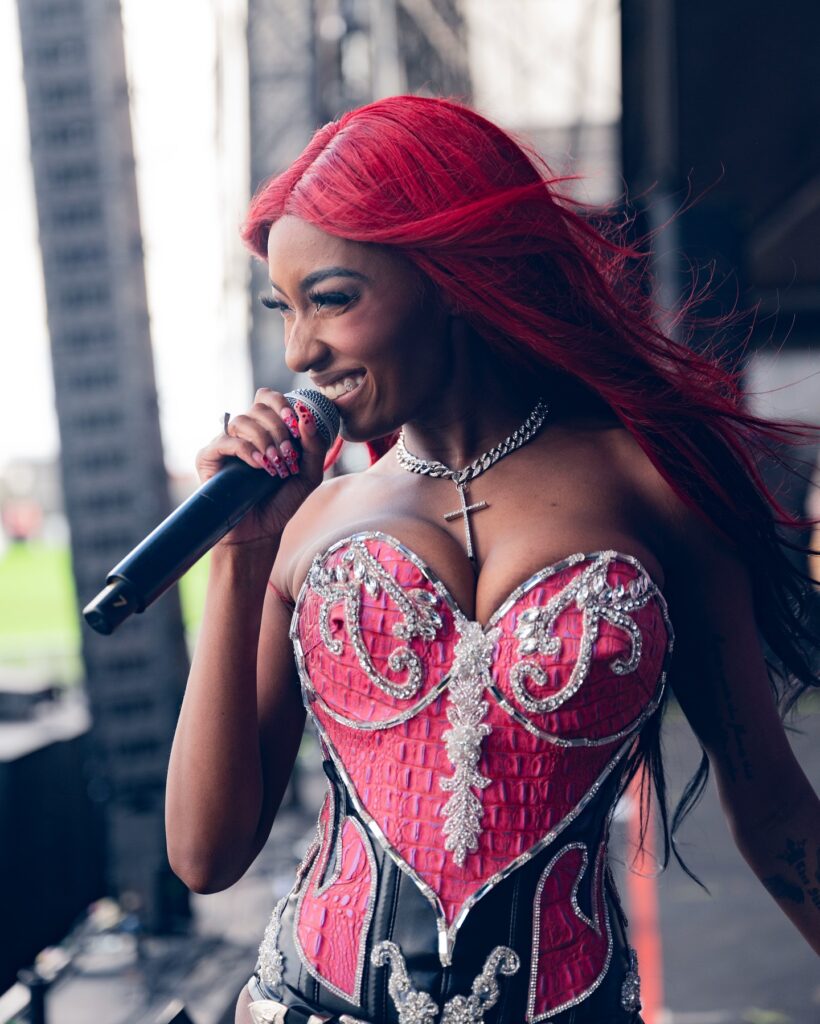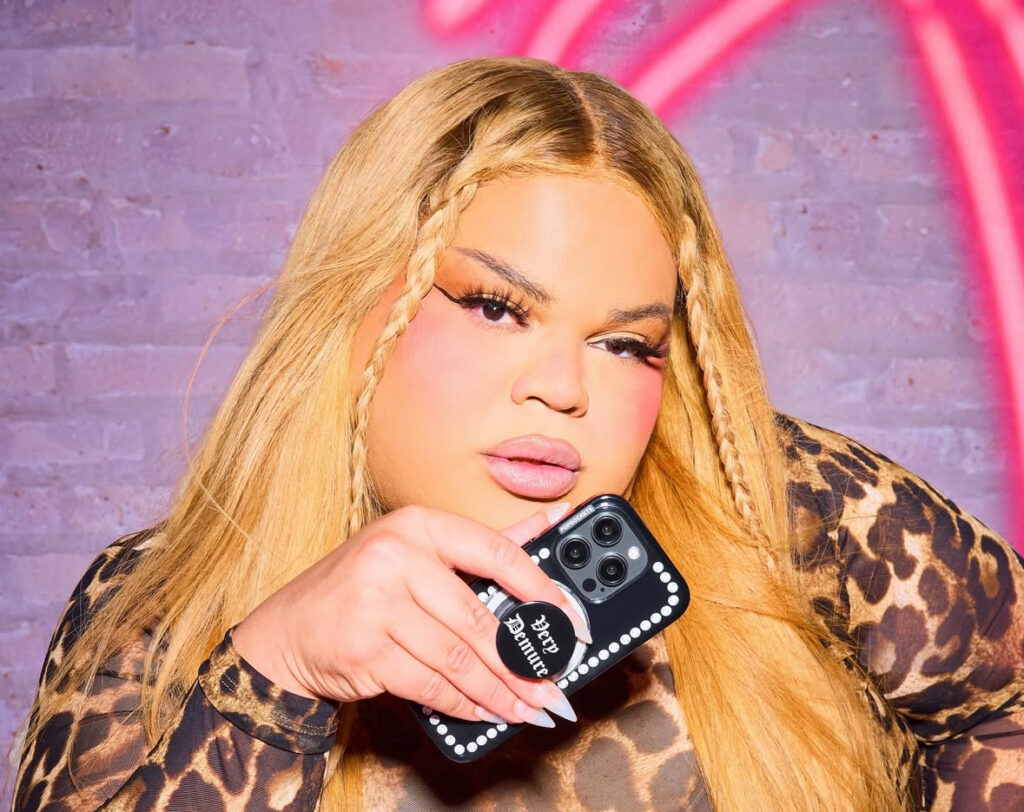Alessandro Michele’s first collection at Valentino arrived earlier this month in all its opulent, maximalist glory, sparking a flurry of conversation about what it means to be a creative director at a luxury fashion house. The internet was quick to accuse the collection of “giving Gucci” — Michele only ended his seven-year-long stint as the creative king of the Italian fashion house in late 2022. Brush strokes from the visual palette he made infamous at Gucci are undeniably detectable at Valentino: one can never have too much color, decadence, or femininity.
While the designer cited the late Valentino Garavani’s archive as inspiration for his debut, this new vision of Valentino cannot be understood without recognizing Michele’s precise taste as a creative. Each successive designer at storied houses is tasked with achieving the right balance of history and newness. However, Michele’s Valentino asks us what it means for a creative director, once so intertwined with the fabric of a brand, to sew themselves into the fabric of a new one.
The Chanel Question
Now, more than ever, the role of the creative director in fashion is experiencing an industry-wide shake-up. Chanel’s creative director, Virginie Viard, recently announced her departure after five years of leading the brand through a post-Lagerfeld world. Viard spent her career working alongside Karl Lagerfeld, beginning at Chanel in 1987; following him to Chloé; and then returning with him ten years later. Notably, she was the second woman to lead the house — second to only Gabrielle Chanel herself. Viard’s less-than-a-decade stint at the artistic helm of the Parisian giant marks an abrupt break in Chanel’s otherwise consistent leadership.
Lagerfeld painted the pale cheeks of the dying brand with rouge in the 1980s, steering the Chanel ship until his death in 2019. Of course, his signature Chanel was a tough act to follow: critics consistently approached Viard’s artistic vision with less enthusiasm and fanaticism than that of her predecessor. Nonetheless, the business skyrocketed during her leadership; in May of 2023, WWD reported Chanel sales up by 16% and revenues at nearly $20 billion. Her departure leaves one to question if commercial and creative success at Chanel were at odds.

Who will fill Viard’s Chanel ballet flats? The line of succession for the next ruler of fashion royalty has sparked both rumors and intrigue. The position, after all, may be the most coveted job in fashion. Pierpaolo Piccioli, the former creative director at Valentino, and Hedi Slimane, who has led Celine since 2018, are popular names swirling around in the pool of whispers.
Piccioli left Valentino after 25 years with the fashion house, where he worked alongside Maria Grazia Chiuri and launched one of the brand’s most recognizable and profitable accessories, the Rockstud shoe. Since his departure, there has been a watchful eye on his next studded step.
The timing is similarly apt for Slimane in the wake of reports that he was caught in a tricky contract negotiation with LVMH. To some, contract complications and Chanel’s announcement are not a couture coincidence. As Phoebe Philo’s successor, Slimane’s Celine has seen high revenue, expanding into menswear, couture, fragrances, and beauty.
More Houses Missing a Creative Director
Chanel, Valentino, and Celine are not the only major houses that are facing a creative turnover. Sarah Burton announced in September of 2023 that she would be leaving Alexander McQueen. She had taken over creative direction following Lee McQueen’s death in 2010. Seán McGirr succeeded her this past year, an Irish native who most recently worked as the Head of Ready-to-Wear at JW Anderson. McGirr’s debut show flirted with the brand’s past, citing The Birds, the infamous Spring/Summer 1995 collection, as a point of inspiration. Continuing to see McGirr grow with the brand will be another case study in how a new guard of creative directors will define this new luxury moment.

Another seat at the fashion table remains empty at Givenchy, which has only stoked the already burning fashion fire. After only three years with the brand, Matthew M. Williams stepped down in December. His predecessor, Clare Waight Keller, also had a short-lived tenure at the house. Riccardo Tisci, who held the role from 2005-2017, had the longest, and perhaps the most impactful, run in the brand’s recent history. Tisci then took the reigns at Burberry until it was announced in 2022 that Daniel Lee would replace him.
What Happens Next?
Without discrediting their wild talent, one cannot ignore a common denominator between these creative directors: they are mostly men — and mostly white. Creative direction has a diversity problem, at least in the realm of luxury heavy hitters. Virgil Abloh made history as the first African-American to be artistic director at a French luxury fashion house when he assumed the role at Louis Vuitton in 2018. Pharrell Williams was named as his replacement after his untimely death. Still, the statistics speak for themselves. A report published by the British Fashion Council found that only 11% of power roles (CEO, CFO, Chairperson, Creative Director) are held by people of color in the UK.
As a result, is young talent turning away from the too-difficult-to-unlock gates of high fashion? Gen Z followers of fashion are certainly hungry to devour up-and-coming, independent designers leading their own labels, such as Sandy Liang, Luar, and Tia Adeola. Cultivating a self-sufficient brand comes with the unique challenges of owning and growing a small business. However, it grants the designer complete creative autonomy, freeing them from the capital-hungry machine that is the luxury conglomerate’s boardroom.
This ever-evolving rotation of creative directors prods at the stability the role once represented in the luxury ecosystem. Fresh strikes of creativity can certainly revive staleness, which tastemakers are yearning for at a house like Chanel. Still, how is the DNA of a brand altered if there’s a new vision every few years? How receptive will the public be to this changing of the guards? The fashion industry prides itself on newness, but it also covets a well-established structure and long-standing success. Right now, change feels like the only constant in fashion. Only time will tell if this couture change is for the better of these brands — or the worse.






